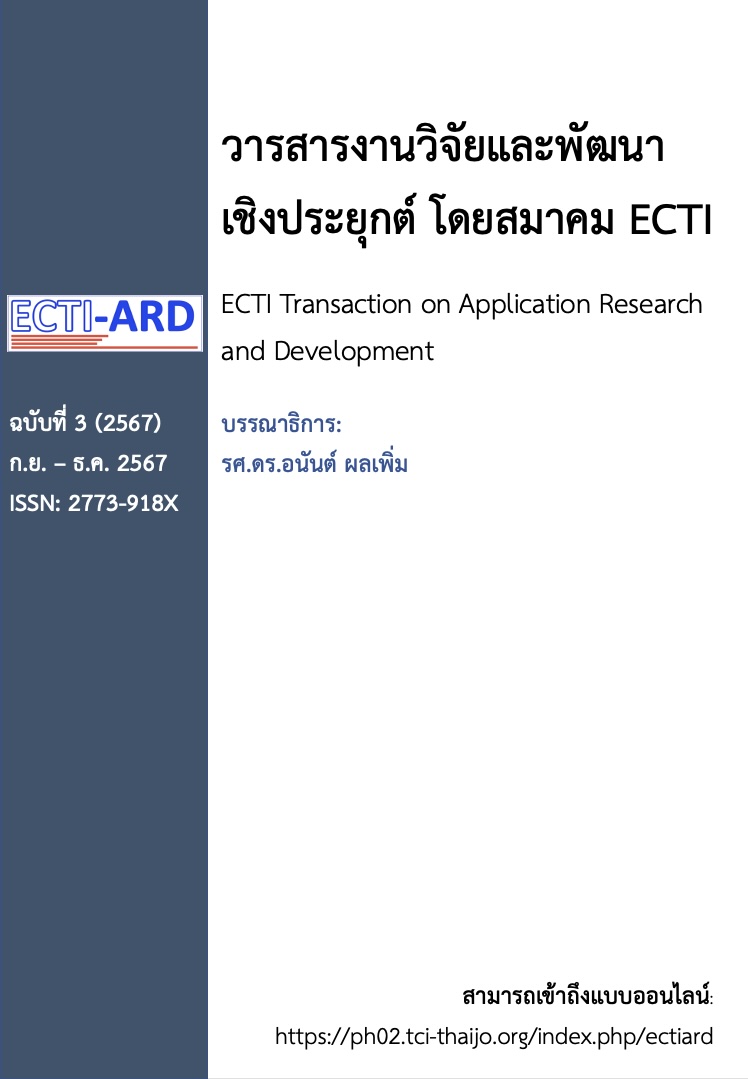The design and implementation 2D Action-platformer Roguelite Game (Reconquer)
Main Article Content
Abstract
Gaming industry has grown rapidly due to the increasing number of players, resulting in more diverse game development. Some games that used to be niche games in the market, such as Roguelite games, have started to gain more players because they are very different from other game genres. This paper presents the design and development of games by integrating the Roguelite genres, action genres and platform genres, which can create fun for players through randomly generated level creation system in the game.
The game uses a random system so that players can repeat the game from the variety each time. Players can plan, and develop decision-making ability to choose the right things to receive. This game was developed with Unity. Using various algorithms that help it run efficiently, such as A-Star search and process creation. Based on the test results from 23 players, the satisfaction score for the game was 4.37 out of 5 points, which is very high.
Article Details

This work is licensed under a Creative Commons Attribution-NonCommercial-NoDerivatives 4.0 International License.
References
ประชาชาติธุรกิจ. (13 กันยายน 2566). ตลาดเกมไทย 3.4 หมื่นล้าน นำเข้ามากกว่าส่งออก 100 เท่า, [ระบบออนไลน์] แหล่งที่มา: https://www.prachachat.net/ict/news-1392689
B.Bediou, D.M. Adams, R.E.Mayer, E.Tipton, C.S.Green and D.Bavelier, “Meta-analysis of action video game impact on perceptual, attentional, and cognitive skills,” Psychological bulletin., Vol. 144, pp. 77-110, 2018. doi: 10.1037/bul0000130S
N. Brewer, "Computerized Dungeons and Randomly Generated Worlds: From Rogue to Minecraft [Scanning Our Past]," Proceedings of the IEEE, Vol. 105 (5), pp. 970-977, 2017. doi: 10.1109/JPROC.2017.2684358
Harris J. Exploring Roguelike Games. 1st ed., CRC Press, 2021.
J. Lait. (3 August 2023). Berlin Interpretation. [Online] Available: https://www.roguebasin.com/
Qaffas, A. “An operational study of video games’ genres,” International Journal of Interactive Mobile Technologies., Vol. 14 (15), pp. 175-194, 2020. doi: 10.3991/ijim.v14i15.16691
J. Gregory. Game engine architecture 3rd Ed., CRC Press, 2019.
M. Toftedahl and H. Engström. “A Taxonomy of Game Engines and the Tools that Drive the Industry”. Proceedings of the 2019 DiGRA International Conference: Game, Play and the Emerging Ludo-Mix. 6-10 August. Ritsumelkan University Kyoto Japan : pp. 1-17, 2019.
C.M. Ruzinoor, M. Shariff A. R., A. N. Zulkipli., M. Rahim M. Shafry, and M. H. Mahayudin, “Using game engine for 3D terrain visualisation of GIS data: A review,” IOP Conference. Series: Earth and Environmental Science., Vol. 20 pp. 12037, 2014. doi: 10.1088/1755-1315/20/1/012037
Unity Technologies. (24 August 2023). Unity. [Online] Available: https://unity.com/
C. Vohera, H. Chheda, D. Chouhan, A. Desai and V. Jain. "Game Engine Architecture and Comparative Study of Different Game Engines". International Conference on Computing Communication and Networking Technologies. 06-08 July. Kharagpur India : pp. 1-6, 2021.
H. Kuntjara and B. Almanfaluthi, “Character Design in Games Analysis of Character Design Theory,” Journal of Games, Game Art and Gamification., Vol. 2 (2), pp. 42-47, 2017. doi: 10.21512/jggag.v2i2.7197
P.W. Atmaja, R.Parlika and F.Muttaqin, “Generating Two-Dimensional Platformer Game Levels from Storylines”. Proceedings of the International Conference on Science and Technology (ICST 2018). 18-19 October. Bali Nusa Dua Convention Center : pp. 1050-1056, 2018.
L. Caroux, K. Isbister, L. Le Bigot and N. Vibert, “Player–video game interaction: A systematic review of current concepts,” Computers in Human Behavior, Vol. 48, pp. 366-381, 2015. doi: 10.1016/j.chb.2015.01.066
D. King, P. Delfabbro and M. Griffiths, “Video game structural characteristics: A new psychological taxonomy,” International Journal of Mental Health & Addiction, Vol. 8, pp. 90–106, 2010. doi: 10.1007/s11469-009-9206-4


